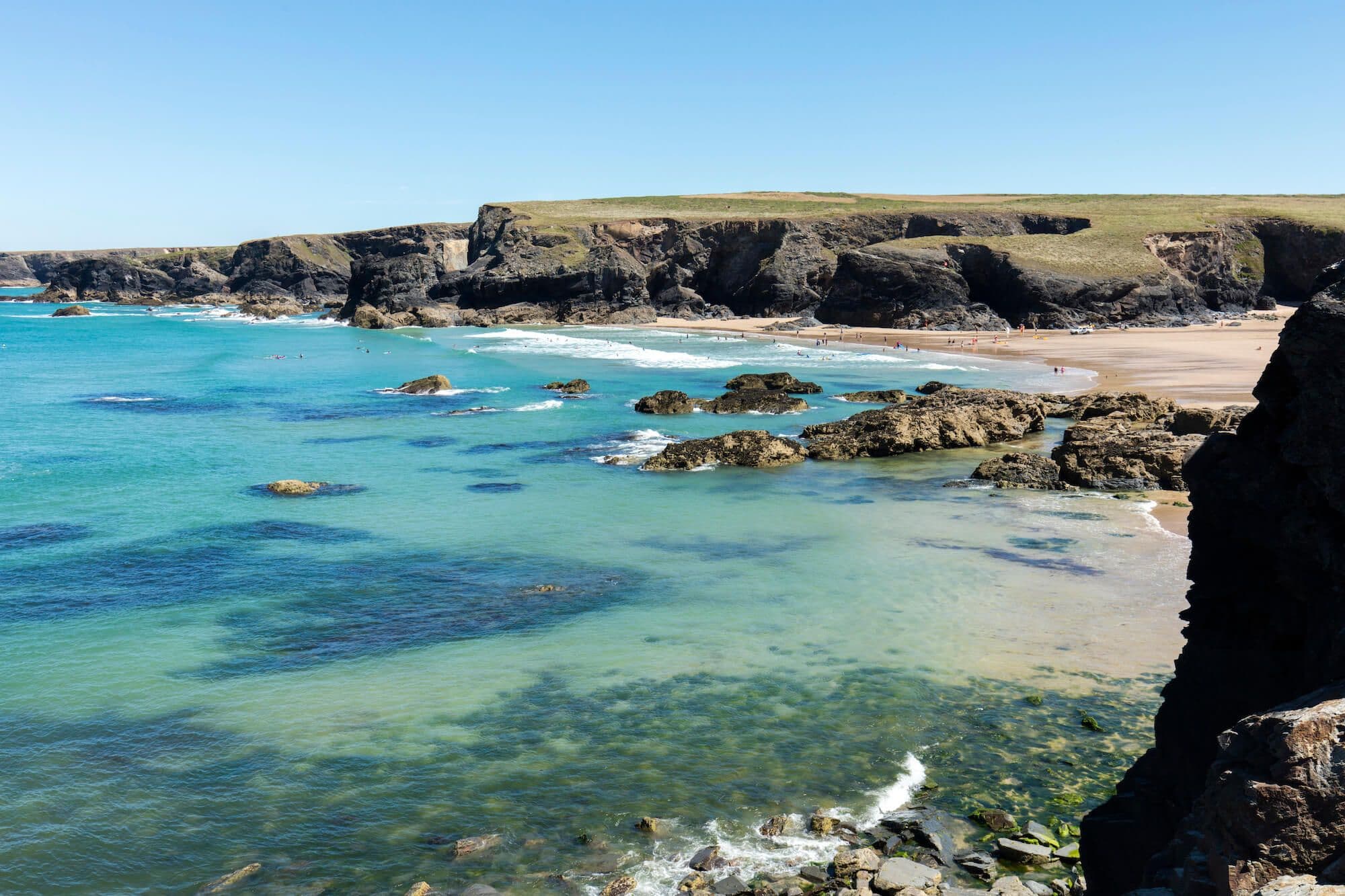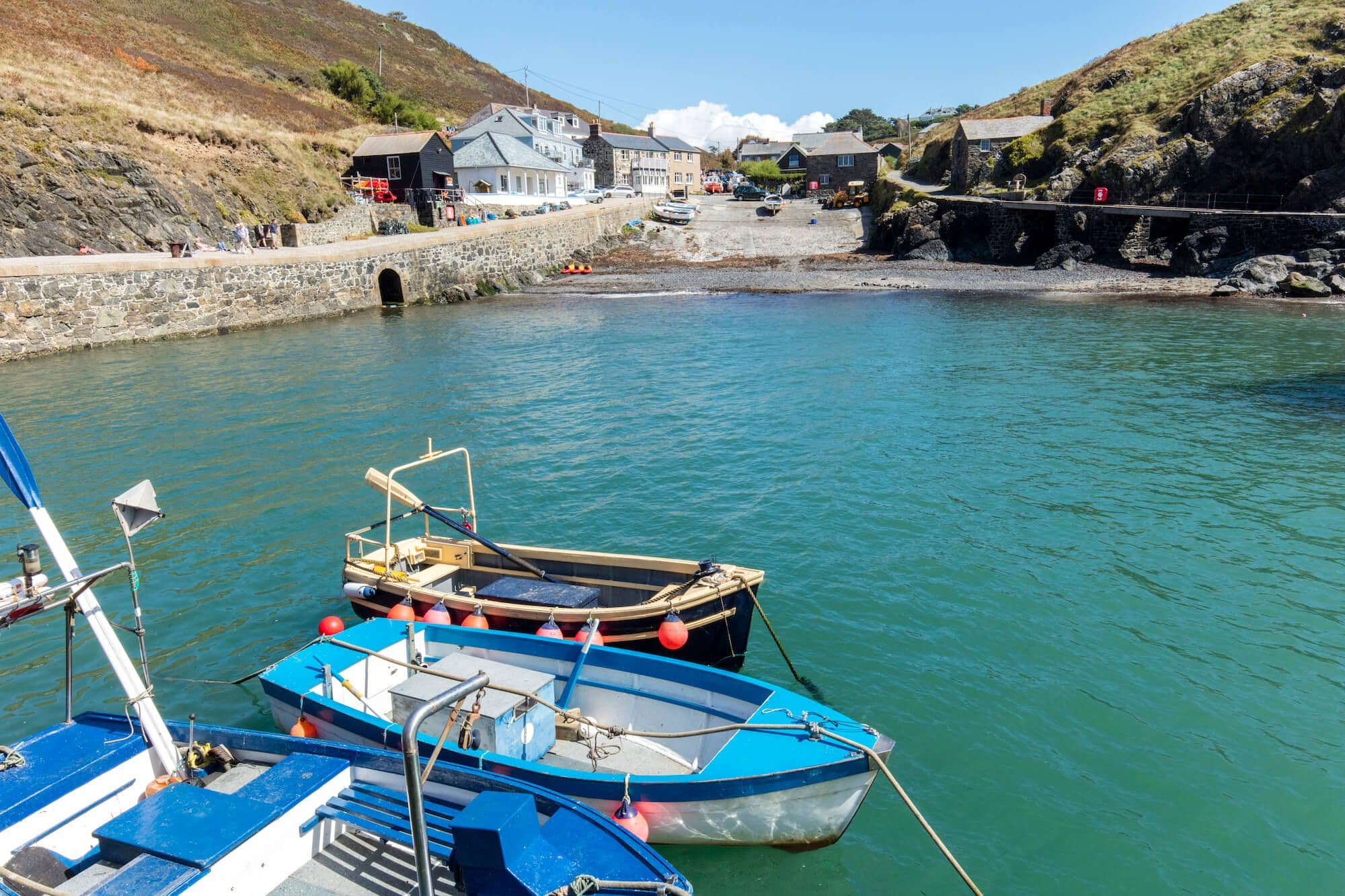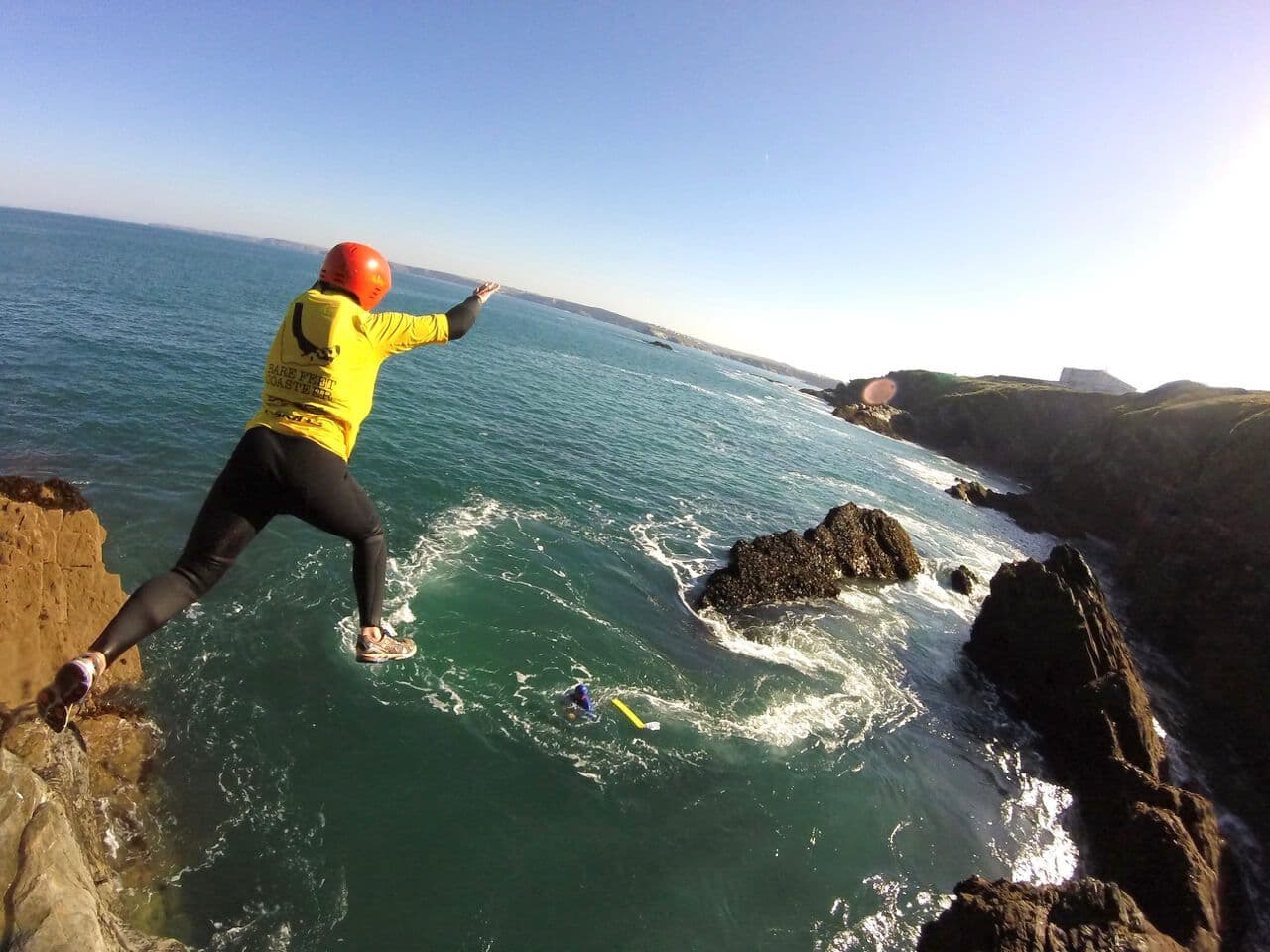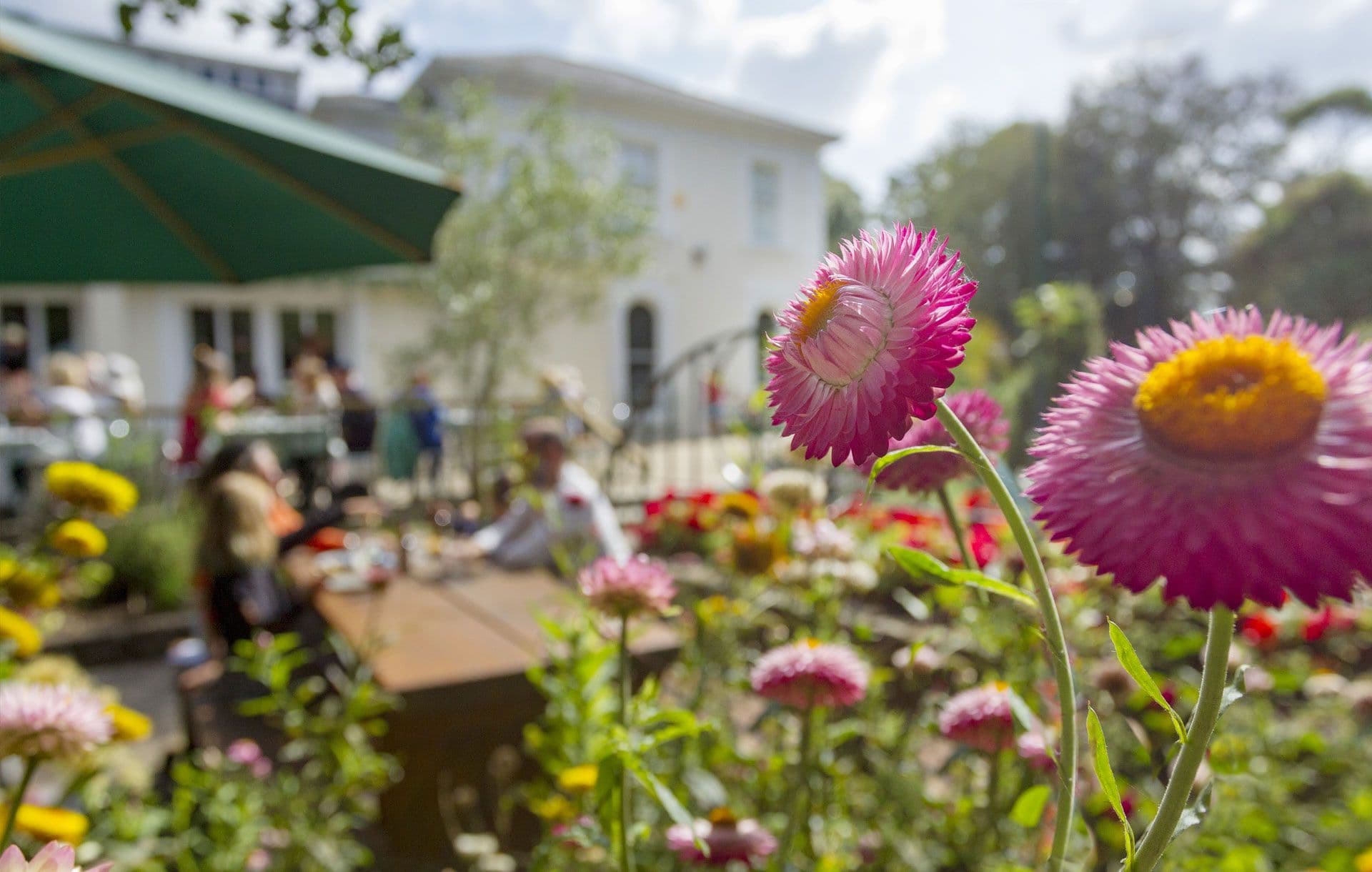The South West Coast Path
Discover the South West Coast Path
Few trails capture the spirit of adventure like the South West Coast Path, and nearly half of this epic journey winds along Cornwall’s spectacular 300-mile coastline. From Hartland to Plymouth, the Cornish section offers everything from gentle strolls to challenging climbs, all set against Cornwall’s breathtaking coastline.
However, what truly sets the South West Coast Path apart is its extraordinary variety. Walkers are treated to towering cliffs, tranquil wooded valleys, serene estuaries, bustling fishing harbours, wild moorland, and soft sandy beaches. Every section unveils a new perspective on Cornwall’s unparalleled natural beauty, promising fresh discoveries every time you visit.
At a Glance
The Cornish section of the South West Coast Path is divided into 26 stages, each ranging from six to fourteen miles. Whilst some adventurous walkers tackle the entire route over 26 days, most opt to explore smaller segments. From short one-kilometre strolls to longer stretches, the path is accessible to all levels of ability and experience.
Starting along the rugged north coast, the trail treats hikers to sweeping cliff-top views and passes through the Cornwall World Mining Heritage Site. It then ventures into West Cornwall, where landmarks like the iconic Land’s End and the majestic St Michael’s Mount await. Following the south coast, the path winds around the edge of the Lizard Peninsula, Britain’s southernmost point, before tracing the banks of the tranquil Helford River and Falmouth’s Carrick Roads. Finally, it crosses the picturesque Roseland Peninsula, rounds Rame Head, and continues into the naval city of Plymouth.
Spanning eleven of Cornwall's twelve National Landscape areas, the South West Coast Path offers a spectacular exploration of Cornwall’s stunning nature, dramatic geography, and fascinating geology. Here are some of the key highlights.
North Coast Newquay to Bude
Known for its fiery sunsets and tall cliffs, Cornwall’s north coast also offers the chance to enjoy fish and chips in Padstow, a Cornish cream tea on the Carnewas coast path, and visit locations featured in Raynor Winn’s The Salt Path.
St Agnes Heritage Coast
This rugged stretch is famed for its mining heritage, wild heather, and iconic engine houses perched atop dramatic cliffs.
Walking the Coast near St Ives
Experience golden beaches, turquoise waters, and stunning views as you navigate the diverse terrain of these scenic routes around St Ives.
Cape Cornwall to Land’s End
This section combines history and natural beauty, with views of the Atlantic, ancient stone circles, and Cornwall’s iconic Land’s End landmark.
The Lizard Peninsula
Britain’s southernmost point boasts rare flora, diverse wildlife, and secluded coves, making it a haven for nature lovers.
Falmouth and the Helford
Discover peaceful estuaries and wooded creeks, with tranquil walking routes that offer glimpses of sailing boats and abundant birdlife.
The Roseland Peninsula
Known for its idyllic villages, rolling hills, and quiet beaches, this area offers some of Cornwall’s most tranquil paths.
Fowey Literary Walks
Explore picturesque riverside trails, charming harbours, and the secluded inlets that define this enchanting area, famed for its literary heritage.
Rame Head
Marking Cornwall’s southeastern edge, Rame Head features historic ruins, dramatic cliffs, and sweeping views over Plymouth Sound. It's also featured within the Salt Path film, starring Gillian Anderson.
If you’re seeking a challenge, these dramatic sections of the South West Coast Path will test your endurance.
Hartland Quay to Bude
Crossing from Devon into Cornwall, this 15-mile stretch is considered the most demanding on the entire South West Coast Path. It features relentless ascents and descents, alongside breathtaking sights like waterfalls, rugged river valleys, and haunting shipwrecks.
St Ives to Pendeen
Amongst the toughest sections of the path, this 14-mile route is both remote and challenging. The rocky, often boggy terrain demands slow, steady progress as it climbs steep cliffs and dips into deep, secluded coves.
Padstow to Harlyn Bay
The route begins in Padstow Harbour and is relatively easy for the first mile up to Gun Point. Afterwards, the walk becomes more challenging with rugged terrain along the dramatic coastline. You'll pass sandy beaches and smugglers' caves, concluding your walk at the popular Harlyn Bay Beach.
The following walks are shorter, easy-going routes, perfect for little legs – whether they belong to children or pets!
Stepper Point, Padstow
This 1.5-mile walk takes you through wildlife-rich farmland to the Day Mark lookout tower at Stepper Point. From the tower, enjoy spectacular views along the rugged coastline and across the Camel Estuary.
Swanpool to Pendennis Point
Starting at Swanpool Beach, this mostly paved trail leads to Pendennis Point, taking in the serene Gyllyngvase Beach. With gentle inclines and stunning sea views, it’s a firm family favourite.
These South West Coast Path routes are suitable for wheelchairs and pushchairs. For more accessible options, see below.
Marazion to Penzance (St Michael’s Mount)
Carnewas at Bedruthan
With stunning sea views stretching from Newquay to Trevose Head, this accessible walk overlooks the dramatic sea stacks of Bedruthan Steps. In spring and autumn, the cliffs are blanketed with flowering squill, whilst the area teems with wildlife and coastal birds.
Godrevy
Overlooking St Ives Bay, a walk around Godrevy Head offers stunning views of Godrevy Island and its lighthouse. The rugged coastline also provides plenty of opportunities to spot seals bobbing in the sheltered coves below.
These beginner-friendly trails feature gentle terrain and manageable distances.
Charlestown and Porthpean
Take a short walk along the South West Coast Path from Carlyon Bay Hotel to the Georgian port of Charlestown. From here, retrace your steps or extend your circular route to include Porthpean.
Prussia Cove
This scenic 2.6-mile walk takes you past a series of secluded coves once used by smugglers, passing abandoned fishermen's huts and historic buildings rumoured to be linked by secret tunnels.
Kylgh Kernow: The Circuit of Cornwall
For those seeking an epic adventure, the South West Coast Path can be combined with the Tamara Coast to Coast Way to form a complete circuit around Cornwall’s boundary. Known as the Circuit of Cornwall, or Kylgh Kernow in Cornish, this remarkable route spans 390 miles.
Completed for the first time in July 2023, this challenge remains one that few have undertaken, making it a unique and rewarding accomplishment for dedicated hikers.The circuit can be joined at any point along the coast path and tackled in sections or as one continuous journey. Completing the full route typically takes around 33 days without rest days, offering a demanding yet unforgettable experience.
The South West Coast Path offers something special in every season, with each time of year bringing its own unique benefits and beauty
Spring brings the landscape to life with blooming wildflowers, such as daffodils, sea campion, and even orchids. Summer is best for longer hikes, with drier ground making routes easier and more daylight hours to pack in the miles. It’s also the best time of year for picnics on the beach or refreshing dips in the sea after a day of walking.
In autumn, the landscape transforms as wildflowers are replaced by golden gorse and purple heather, particularly stunning along the coastline around St Agnes and Land’s End. Wildlife enthusiasts should head to the path in winter, with opportunities to spot seal pups nestled in the coves and even the occasional humpback whale.
However, be sure to check the weather forecast to avoid hazardous waves, strong winds, or heavy rain, and wear sturdy hiking boots to navigate muddy paths safely.
Respecting Wildlife
One of the joys of hiking the South West Coast Path is the chance to encounter its incredible wildlife. To ensure these experiences can be enjoyed for generations to come, it’s essential to interact with nature responsibly.
Avoid feeding or approaching birds and animals, especially during breeding or nesting seasons, as this can disturb them. Seals, in particular, are easily startled, so it’s best to keep a safe distance and avoid drawing attention to your presence.
If you’re tempted to pick flowers or forage, do so sparingly – overharvesting can lead to the decline of native species. By treading lightly and respecting the natural world, you’ll help protect the path’s unique ecosystems for future explorers.
For more information on how to interact responsibly with wildlife you can read the Cornwall Marine and Coastal Code.

Your weekly dose of Cornish cheer!
When you can’t be in your favourite place all the time, catch up on the latest stories, upcoming events, holiday ideas, and offers with a newsletter straight to your inbox. Terms and Conditions / GDPR compliance: by providing personally identifiable information Visit Cornwall will use it to provide you with ongoing information about their products and services. No one from Visit Cornwall will rent, sell or lease this personally identifiable information to other companies or individuals.
Stay connected
Find us on socials and stay connected with the Cornwall you love.
We use cookies to personalise content and ads and to analyse our traffic. You consent to our cookies if you continue to use our website. (Privacy Policy)




![[83284]%20LizardPoint-9_AdamGibbard (3) (1)-min.jpg](/_next/image?url=https%3A%2F%2Fstorage.googleapis.com%2Fvisit-cornwall-production-uploads%2F83284_20_Lizard_Point_9_Adam_Gibbard_3_1_min_a929b7c3f4.jpg&w=3840&q=75)














